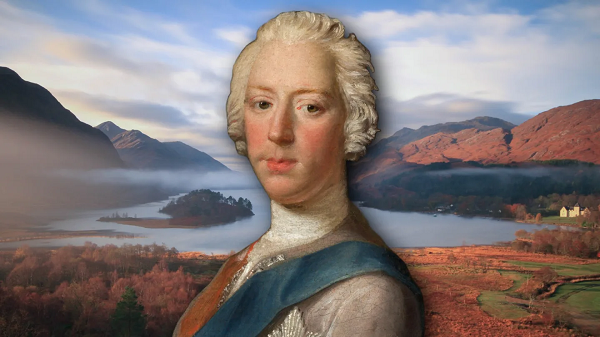Charles Edward Stuart- Death Masks Help Recreate Face Of Bonnie Prince Charlie

Prince Charles Edward Stuart, commonly known as “Bonnie Prince Charlie” or “the Young Pretender,” was a pivotal figure in Scottish and British history. Here’s a detailed introduction about him:
Also Read:- Lucy Letby (Nurse) Wiki, Age, Family Networth & Latest News
Bonnie Prince Charlie – Biography & Details:
- Full Name: Charles Edward Louis John Casimir Sylvester Severino Maria Stuart
- Born: December 31, 1720
- Died: January 31, 1788
- Place of Birth: Palazzo Muti, Rome, Papal States (present-day Italy)
Parentage: He was the elder son of James Francis Edward Stuart, who was known as “the Old Pretender,” and Maria Clementina Sobieska. His grandfather was King James II of England and VII of Scotland, who was deposed in the Glorious Revolution of 1688.
Key Events & Historical Significance:
- Jacobite Risings: Bonnie Prince Charlie is best known for his role in the 1745 Jacobite Rising. The Jacobites were supporters of the Stuart claim to the British throne. They believed that the Protestant Hanoverians (who were ruling Britain) were usurpers, and that the throne should be restored to the Roman Catholic Stuart line.
- The ’45 Rebellion: In 1745, Charles landed in Scotland and quickly gathered an army. He initially saw success, advancing as far south as Derby in England. However, the Jacobite army decided to retreat from there, fearing a larger English force. This retreat marked the turning point of the rebellion.
- Battle of Culloden: The rebellion culminated in the Battle of Culloden on April 16, 1746, where the Jacobite forces were decisively defeated by the Hanoverian forces led by the Duke of Cumberland. It was the last pitched battle fought on British soil.
- Escape to Europe: After the defeat at Culloden, Bonnie Prince Charlie evaded capture for several months, despite a large reward on his head. With the assistance of loyal supporters, including the famous Flora MacDonald, he managed to escape to the Isle of Skye and eventually back to Europe.
Later Life: Bonnie Prince Charlie spent the remainder of his life in exile in Europe, with much of it spent in Italy. His attempts to regain the British throne were unsuccessful, and over time, he lost the support of the French monarchy, which had been a key ally of the Jacobites. He died in Rome in 1788.
Legacy: The romantic image of Bonnie Prince Charlie and the Jacobite cause has persisted in Scottish and British culture. His life and the events of the ’45 Rebellion have been the subject of many songs, poems, novels, and paintings.
In summary, Bonnie Prince Charlie remains an emblematic figure of Scottish identity, embodying both the hope of a Stuart restoration and the tragic realities of the Jacobite Risings.
Death Masks Help Recreate Face Of Bonnie Prince Charlie
Bonnie Prince Charlie’s visage has been recreated using death masks depicting him as he would have appeared during the Jacobite revolt of 1745.
The prince, who was known for his fine looks, has piqued the imagination of a new generation thanks to the television drama Outlander.
The Centre for Anatomy and Human Identification at the University of Dundee has created what is considered to be the most lifelike recreation of the prince’s face to date.
It depicts him with blond ringlets, a white shirt, and blotchy blotches on his skin, as he would have appeared during the Jacobite uprising, his failed attempt to restore his father, James Francis Edward Stuart, to the British throne.
Researchers scanned and mapped the prince’s death masks so that 3D models could be created using cutting-edge technologies, allowing experts to de-age the prince.
“I had looked at previous reconstructions of historical figures and was interested in how these could be done differently,” said Barbora Veselá, a master’s student who launched the project.
“I wanted to depict him as he would have appeared during the Jacobite rising.” There are publicly available Bonnie Prince Charlie death masks, as well as several in private collections.
“We also know that he had a stroke before he died, which made the age regression process even more intriguing to me.”
At the age of 24, Prince Charles Edward Stuart attempted to reclaim the Great British throne for his father, exiled King James III of England, Ireland, and Scotland.
Despite some early victories, his army was crushed by government forces at the Battle of Culloden, near Inverness, in April 1746.
Bonnie Prince Charlie remained a fugitive for the next five months before fleeing to France and remaining there for the rest of his life. His efforts resulted in one of the most romanticized periods in Scottish history.
When the prince died of a stroke at the age of 67 in Palazzo Muti in Rome, a cast of his face was made, as was customary for famous persons at the time.
Veselá photographed the masks from all sides and then used photogrammetry software to create a 3D model from around 500 pictures.
“It has been a pleasure to work with these artifacts,” she remarked. The access I’ve had has been wonderful. There are times when you’re working with the masks and it hits you that this was once a living person.
“Beauty is very subjective, but Bonnie Prince Charlie has distinguishing features, such as his nose and eyes, that entice you to study him.” Hopefully, this restoration encourages people to consider him as a person rather than just a legend.”
The piece will be included in the annual master’s display at the University of Dundee, which opens to the public on Saturday.










